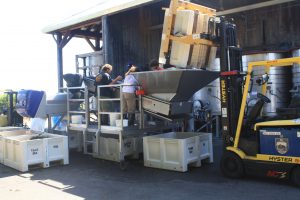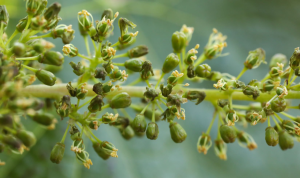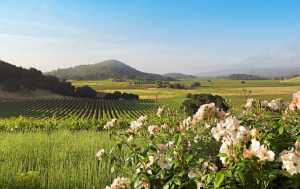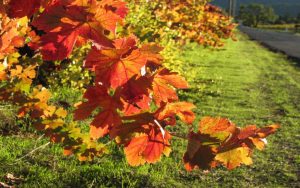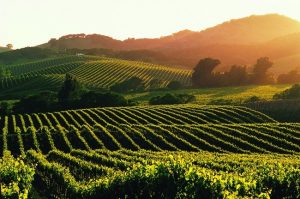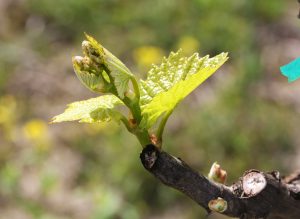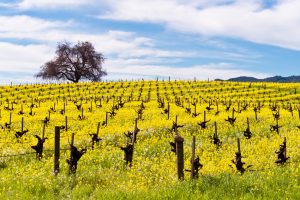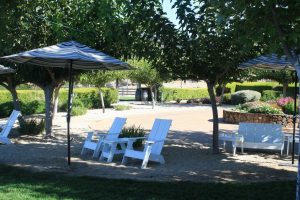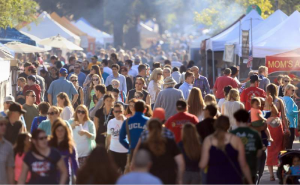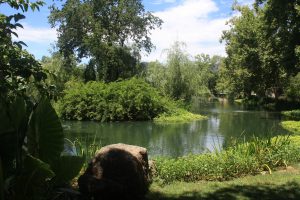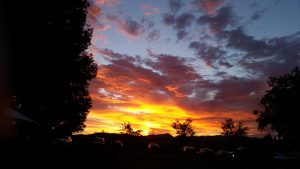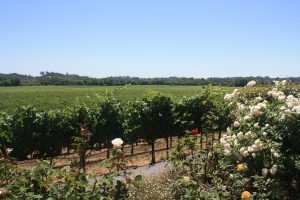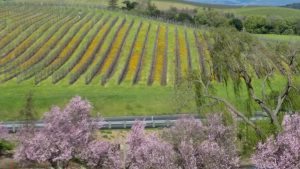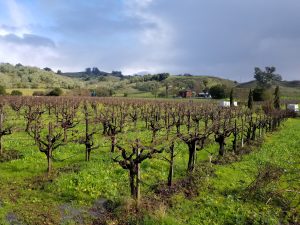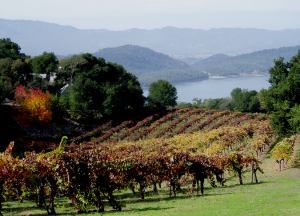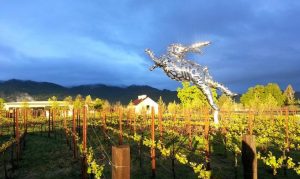This article concludes Power Tasting’s irregular series on visiting Napa Valley and Sonoma County (“Napa/Noma”) in each of the months of the year. So many people ask when the best time would be, and the answer is always the same: There is no best time. Every month has its charms and its drawbacks. If you’d like to read all of the series, scroll way down on the masthead on the left of on our Welcome page and click on Months.
One thing differentiates a visit to Napa/Noma in September from all the other months: the harvest is in full flight every day. There are plusses and minuses to that fact. There are some things that you can only see and do if you are there for The Crush, as they call it. On the other hand, there are some things that you might want to see and do that are more difficult when the harvest is on.
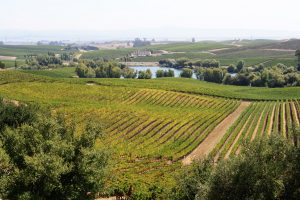 Carneros in September, between Napa and Sonoma Counties.
Carneros in September, between Napa and Sonoma Counties.
If you want to get a visceral understanding of the industrial process that is winemaking, you can surely do that in September. Just drive around a bit and you’ll find workers in the vineyards picking grapes, loading them in baskets and dumping the fruit into trucks. However, just as often these days, you’ll see giant harvesters doing the job without hand laborers. You’re more likely to see the manual process at the vineyards producing more expensive wines; the cost of labor is a factor in the price. But the quality also comes from selective picking.
Some wineries process the grapes in outdoor facilities. Easiest to find are the sorting and de-stemming operations. You may very well not get to see the actual crushing and maceration of the wine. These are industrial processes and the last thing winemakers need is a crowd of tourists trying to figure out what’s going on. You may find that winery tours available the rest of the year are not available during the week or two that the harvest is on.
Because so many people do want to visit during this time of the year, hotel rooms are harder to get and more expensive when you do. Restaurants also tend to fill up sooner because of all the tourists, but fewer tables are taken by locals, many of whom are exhausted from making wine.
As elsewhere, the beginning of the month is still summer, while autumn rolls in at the end. But California stays warmer for longer than other places, sometimes much warmer for much longer. Sadly, one of the considerations about visiting Napa/Noma in September is the possibility that wildfires will erupt. In 2020, the biggest of the Napa fires began in late September and lasted into October. But in Sonoma County, the fires began in August. In 2017, they occurred in October in both locations. There is no reason to think that wild fires will happen, but plenty of reason to think they might. This has to be part of your travel planning in these perilous times.
Whatever the issues, it’s a lot of fun to see The Crush. That’s a powerful reason to visit Napa/Noma in September.
